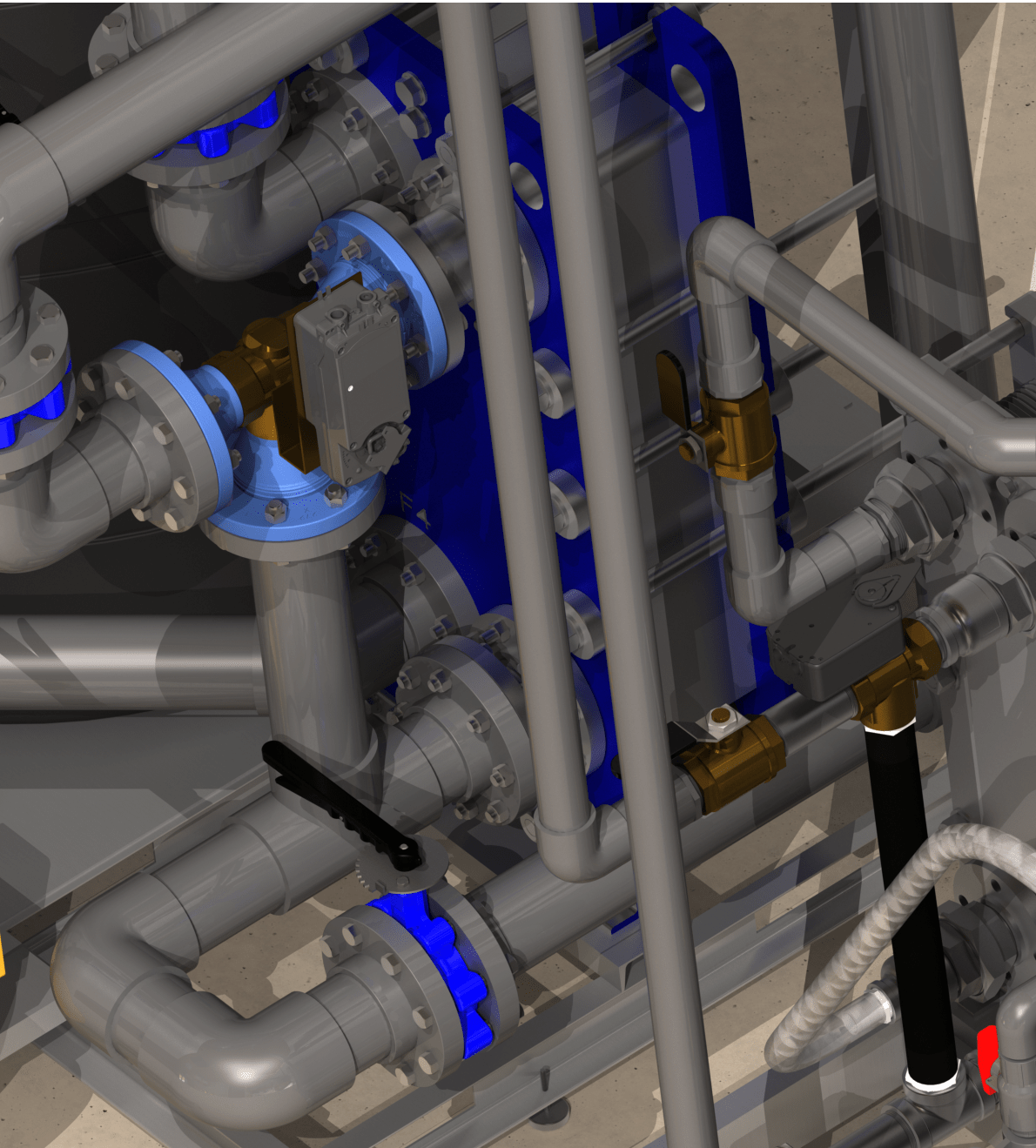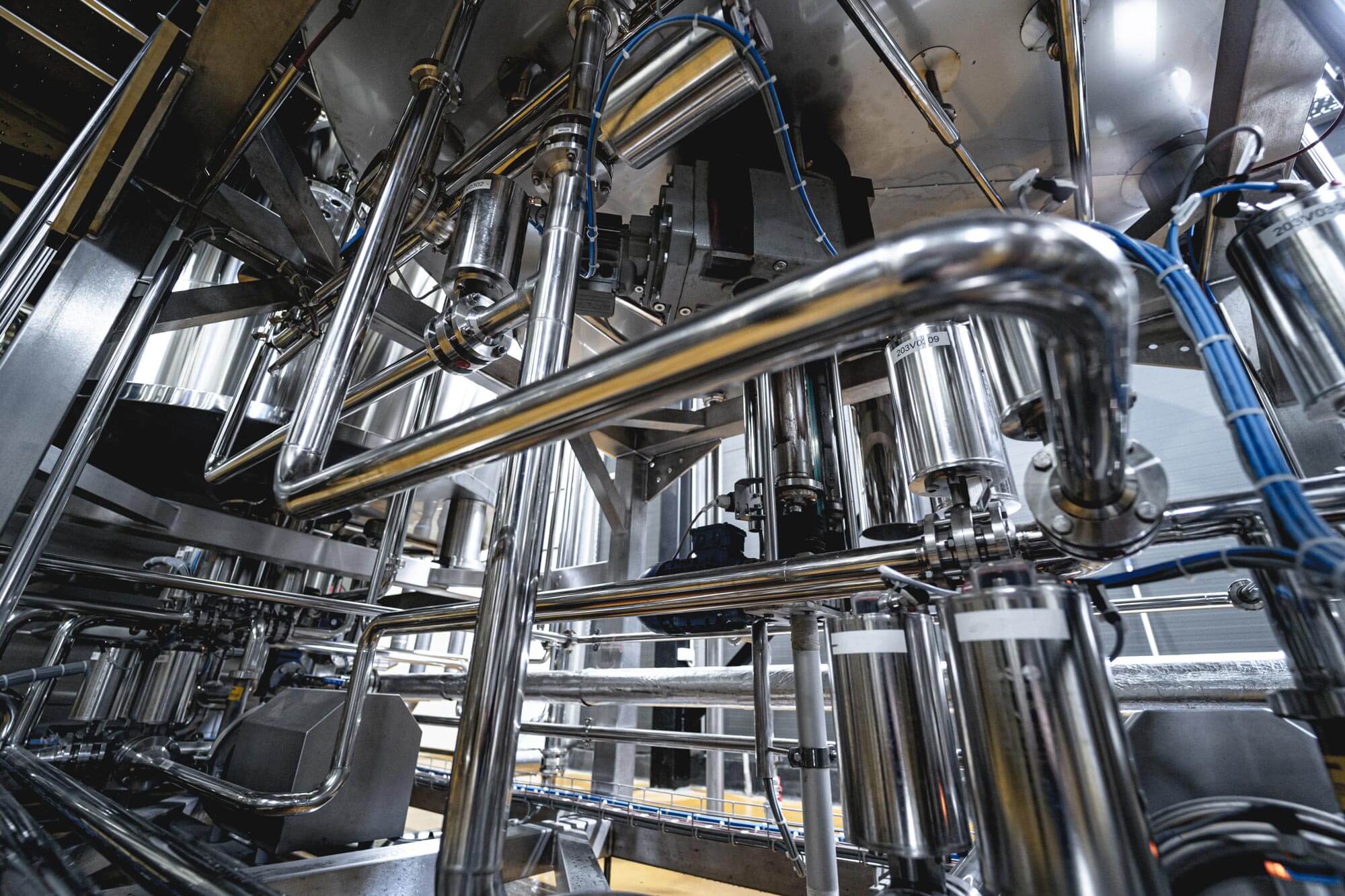How To Optimize Thermal Conductivity with DVS Heat Transfer Systems in Extreme Environments
Wiki Article
Technologies in Heat Transfer Solutions: What You Need to Know for Optimal Efficiency
Innovations in Heat transfer systems are transforming efficiency across various sectors. Advanced products like graphene and nanofluids assure considerable renovations in thermal conductivity. At the same time, the assimilation of IoT and machine understanding provides chances for real-time monitoring and improved energy effectiveness. The landscape of thermal management is quickly evolving. Comprehending these advancements is crucial for accomplishing perfect system efficiency and sustainability in the future. What specific innovations are shaping this makeover?Emerging Products for Boosted Heat Transfer

Advanced Heat Exchanger Styles
While conventional Heat exchangers have actually offered their function in various applications, progressed designs are currently emerging to fulfill the boosting needs for effectiveness and efficiency. These innovative styles, such as plate, shell-and-tube, and finned-tube Heat exchangers, integrate enhanced area and enhanced flow patterns to boost thermal transfer rates. On top of that, compact styles enable for decreased room demands without compromising effectiveness. Advanced materials, such as composites and corrosion-resistant alloys, in addition enhance toughness and performance under severe conditions. Additionally, simulation modern technologies and computational liquid dynamics are significantly used to fine-tune these styles, ensuring peak Heat transfer qualities. As markets look for to decrease energy intake and make best use of output, the adoption of advanced Heat exchanger styles is critical in attaining these goals.The Function of Nanotechnology in Heat Transfer
Nanotechnology plays a vital role in improving thermal conductivity within Heat transfer systems. By adjusting materials at the nanoscale, researchers have attained considerable renovations in power performance. These advancements not just maximize performance however also add to more sustainable energy remedies.Enhanced Thermal Conductivity
Significant developments in thermal conductivity have arised via the application of nanotechnology, revolutionizing Heat transfer systems across various industries. By including nanoparticles into Heat transfer fluids and products, researchers have actually accomplished remarkable rises in thermal conductivity. These nanoparticles, such as carbon nanotubes, graphene, and metal oxides, improve the Heat transfer properties as a result of their high surface and unique thermal features. The resulting composites show enhanced efficiency in applications ranging from electronic devices cooling systems to renewable resource modern technologies. Additionally, the capacity to tailor the dimension, form, and structure of nanoparticles permits for optimized thermal administration solutions. Consequently, nanotechnology proceeds to play a pivotal role in the advancement of extra reliable and effective Heat transfer systems, paving the way for improved commercial applications.
Power Efficiency Improvements

Assimilation of IoT in Heat Transfer Solutions
The combination of IoT in Heat transfer systems presents the implementation of smart sensing units that enhance operational effectiveness. These sensing units make it possible for real-time data monitoring, enabling for instant changes and optimizations. This technological development has the prospective to considerably improve performance and energy administration in Heat transfer applications.Smart Sensors Application
As Heat transfer systems progress, the assimilation of clever sensing units via the Net of Points (IoT) has actually arised as a transformative strategy. These sensing units make it possible for real-time surveillance of temperature level, flow, and pressure prices, boosting system efficiency and integrity. By accumulating and sending information, they facilitate aggressive maintenance, reducing the risk of system failures. Additionally, smart sensors contribute to power financial savings by refining functional criteria based upon environmental conditions. Their capacity to examine anomalies and trends enables notified decision-making, making sure peak performance of Heat transfer systems. As markets progressively adopt this modern technology, the execution of clever sensing units stands to transform how Heat transfer systems are handled, paving the method for greater sustainability and improved efficiency results.Real-Time Information Surveillance
Exactly how can real-time information monitoring improve the efficiency of Heat transfer systems? By integrating Net of Things (IoT) modern technology, Heat transfer systems can leverage constant data collection from wise sensors. This real-time surveillance allows for prompt analysis of flow, temperature level, and stress prices, enabling drivers to identify inefficiencies without delay. Modifications can be made to enhance efficiency, reduce power consumption, and prolong tools life-span. In addition, predictive upkeep can be executed, reducing unforeseen downtime and pricey repairs. The capacity to imagine efficiency metrics with dashboards boosts decision-making, fostering a positive technique to system management. Inevitably, real-time information checking not only boosts functional performance yet also adds to sustainability objectives within industrial procedures.Power Performance and Sustainability Trends
Energy efficiency and sustainability patterns are improving the landscape of Heat transfer systems, driving advancement and conformity throughout numerous markets. Organizations are increasingly prioritizing energy-efficient styles to decrease functional prices and reduce ecological effects. The combination of sustainable energy resources is ending up being more prevalent, allowing Heat transfer systems to run sustainably while meeting regulative needs. Furthermore, innovations in products and technologies promote reduced power intake and enhance total efficiency. Lifecycle evaluations are likewise getting grip, allowing business to review the ecological impact of Heat transfer systems from production to disposal. This concentrate on sustainability not only supports company obligation but additionally settings companies competitively in a market where customers significantly favor green services. Energy efficiency and sustainability continue to be critical considerations for future growths in Heat transfer technology.Advancements in Thermal Management Solutions
While the need for effective Heat transfer continues to climb, developments in thermal administration options are arising to address both performance and sustainability obstacles. Advanced products, such as phase change products and nanofluids, are being created to enhance Heat transfer effectiveness - DVS Heat Transfer Systems. These products enhance thermal conductivity and permit far better temperature level policy in DVS Heat Transfer Systems numerous applications. Additionally, modern technologies like active thermal control systems are getting grip, making it possible for real-time changes to handle Heat circulation effectively. These systems add to energy financial savings and lower the environmental influence of thermal processes. Furthermore, the integration of IoT in thermal administration promotes surveillance and predictive maintenance, making certain enhanced performance and durability of Heat transfer systems. On the whole, these advancements stand for considerable strides towards more sustainable thermal monitoring methodsFuture Instructions in Heat Transfer Technology
Emerging developments in thermal monitoring solutions indicate an appealing future for Heat transfer modern technology. Scientists are significantly concentrating on developing products with superior thermal conductivity and enhanced power performance. Developments such as nanofluids, which consist of suspended nanoparticles, provide substantial enhancements in Heat transfer efficiency. Additionally, the integration of clever materials that adjust to differing temperature problems is getting traction, allowing for even more responsive and efficient systems. The rise of additive production strategies is additionally allowing the layout of intricate Heat exchanger geometries that maximize fluid flow. Additionally, the implementation of artificial intelligence algorithms is anticipated to reinvent the optimization of Heat transfer systems, helping with predictive upkeep and performance improvement. Collectively, these innovations are positioned to change the landscape of Heat transfer technologies in numerous sectors.
Often Asked Inquiries

Just how Do I Select the Right Heat Transfer System for My Application?
Picking the right Heat transfer system entails reviewing application requirements, consisting of temperature arrays, liquid residential properties, and efficiency requirements. Analyzing system kinds, upkeep considerations, and cost-effectiveness likewise plays a crucial role in making a notified decision.What Are the Maintenance Requirements for Advanced Heat Exchangers?
Maintenance requirements for advanced Heat exchangers usually include regular examinations, checking for leaks, cleansing of surfaces, and ensuring excellent flow rates. Abiding by manufacturer standards warranties reliable procedure and prolongs the equipment's life expectancy.
How Do Ecological Factors Influence Heat Transfer Effectiveness?
Ecological variables significantly affect Heat transfer effectiveness. Variants in air flow, temperature, and humidity effect thermal conductivity and convective Heat transfer, eventually influencing system performance and requiring consideration throughout the layout and procedure of Heat transfer systems.What Safety And Security Specifications Relate To Heat Transfer Equipments?
Security standards for Heat transfer systems typically include standards from organizations such as ASME and ASTM. DVS Heat Transfer Systems. These criteria address products, design, and functional practices to guarantee integrity, effectiveness, and protection against hazards in various applications
Exactly How Can I Repair Common Heat Transfer System Issues?
Fixing typical Heat transfer system issues entails looking for leakages, making sure proper fluid flow, evaluating insulation integrity, and confirming temperature differentials. Identifying these factors can help preserve system performance and stop more issues.Nanotechnology plays a necessary duty in boosting thermal conductivity within Heat transfer systems. Considerable improvements in thermal conductivity have actually arised via the application of nanotechnology, revolutionizing Heat transfer systems across various markets. Improvements in thermal conductivity via nanotechnology have actually paved the means for exceptional enhancements in energy efficiency within Heat transfer systems. Energy performance and sustainability fads are improving the landscape of Heat transfer systems, driving innovation and conformity across various markets. The combination of IoT in thermal management assists in monitoring and anticipating maintenance, guaranteeing optimized efficiency and long life of Heat transfer systems.
Report this wiki page